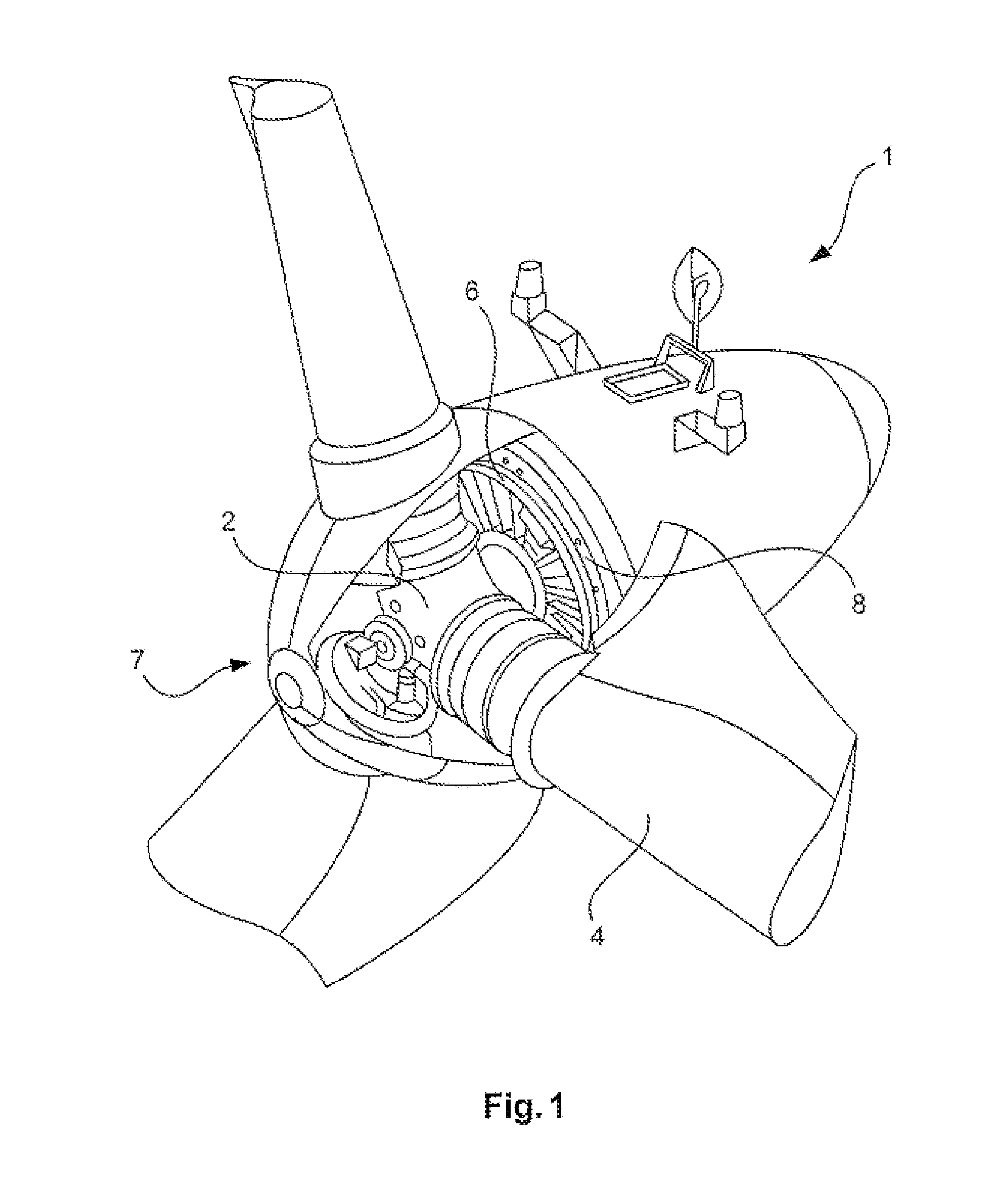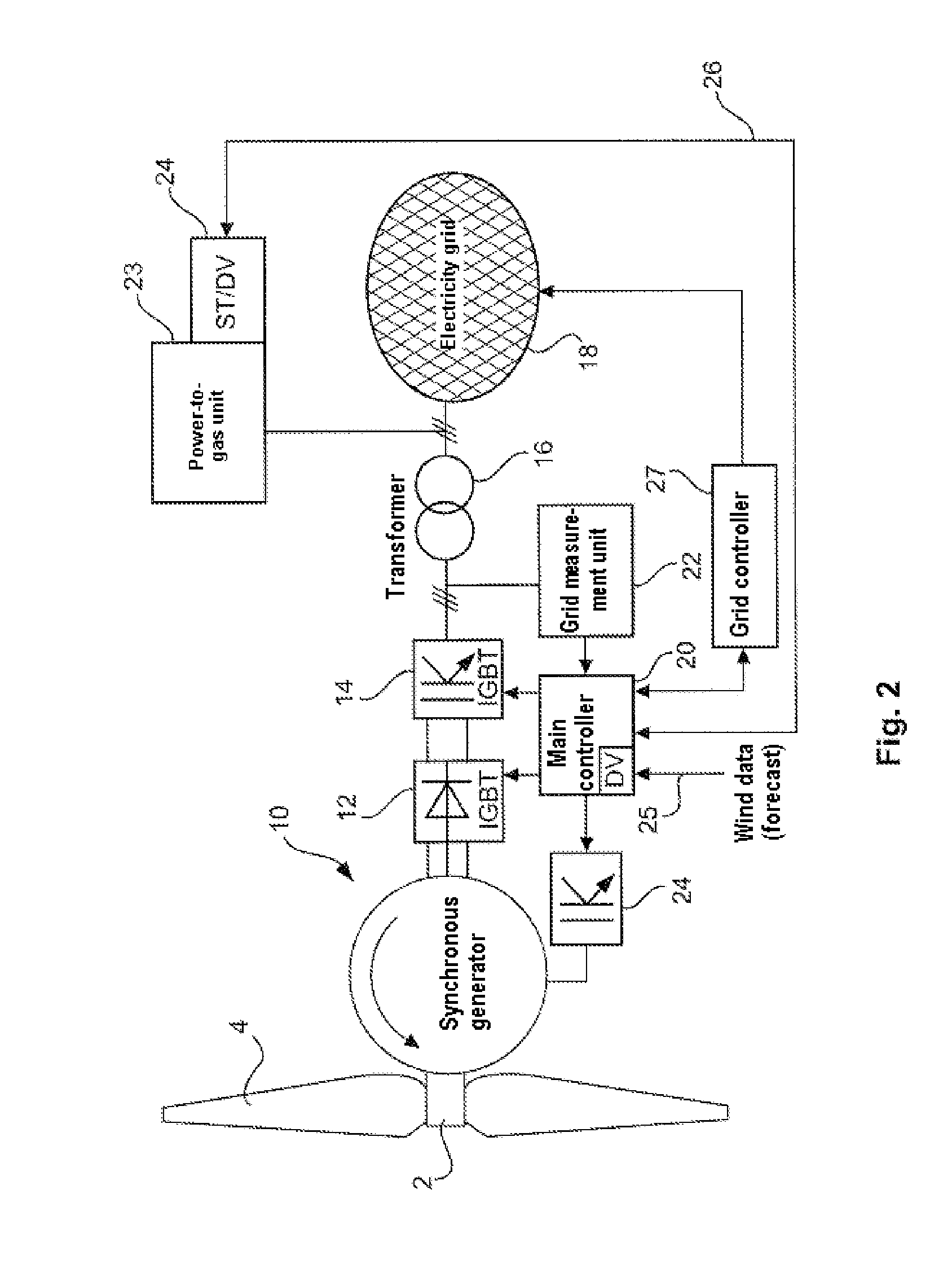Method for operating a wind turbine or a wind farm
a technology of wind turbines and wind farms, applied in the direction of reciprocating combination engines, electric generator control, greenhouse gas reduction, etc., can solve the problems of accelerated ageing and wear of components, and wind turbine failures in terms
- Summary
- Abstract
- Description
- Claims
- Application Information
AI Technical Summary
Benefits of technology
Problems solved by technology
Method used
Image
Examples
Embodiment Construction
[0039]Identical reference symbols can denote identical or else similar, non-identical elements below. For reasons of completeness, a wind turbine comprising a synchronous generator and having a gearless concept with a full converter will be explained below.
[0040]FIG. 1 shows, schematically, a wind turbine 1. In particular, a pod of a gearless wind turbine is shown as an example. The hub 2 is recognizable from the spinner which is illustrated as being partially open. Three rotor blades 4 are fastened at the hub 2, wherein the rotor blades 4 are only illustrated in their region close to the hub. The hub 2 with the rotor blades 4 forms an aerodynamic rotor 7. The hub 2 is fixedly connected mechanically to the rotor 6 of the generator, which can also be referred to as armature 6 and is referred to as armature 6 below. The armature 6 is mounted rotatably with respect to the stator 8.
[0041]The armature 6 is energized during its rotation relative to the stator 8, generally with a direct cu...
PUM
 Login to View More
Login to View More Abstract
Description
Claims
Application Information
 Login to View More
Login to View More - R&D
- Intellectual Property
- Life Sciences
- Materials
- Tech Scout
- Unparalleled Data Quality
- Higher Quality Content
- 60% Fewer Hallucinations
Browse by: Latest US Patents, China's latest patents, Technical Efficacy Thesaurus, Application Domain, Technology Topic, Popular Technical Reports.
© 2025 PatSnap. All rights reserved.Legal|Privacy policy|Modern Slavery Act Transparency Statement|Sitemap|About US| Contact US: help@patsnap.com



